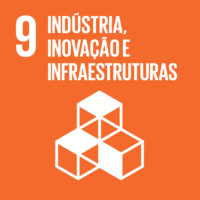Ciência_Iscte
Publicações
Descrição Detalhada da Publicação
Artigo em revista científica
Q1
IoT and engagement in the ubiquitous museum
Título Revista
Sensors
Ano (publicação definitiva)
2019
Língua
Inglês
País
Suíça
Mais Informação
Web of Science®
Scopus
Google Scholar
Esta publicação não está indexada no Google Scholar
Esta publicação não está indexada no Overton
Abstract/Resumo
In increasingly hyper-connected societies, where individuals rely on short and fast online communications to consume information, museums face a significant survival challenge. Collaborations between scientists and museums suggest that the use of the technological framework known as Internet of Things (IoT) will be a key player in tackling this challenge. IoT can be used to gather and analyse visitor generated data, leading to data-driven insights that can fuel novel, adaptive and engaging museum experiences. We used an IoT implementation-a sensor network installed in the physical space of a museum-to look at how single visitors chose to enter and spend time in the different rooms of a curated exhibition. We collected a sparse, non-overlapping dataset of individual visits. Using various statistical analyses, we found that visitor attention span was very short. People visited five out of twenty rooms on average, and spent a median of two minutes in each room. However, the patterns of choice and time spent in rooms were not random. Indeed, they could be described in terms of a set of linearly separable visit patterns we obtained using principal component analysis. These results are encouraging for future interdisciplinary research that seeks to leverage IoT to get numerical proxies for people attention inside the museum, and use this information to fuel the next generation of possible museum interactions. Such interactions will based on rich, non-intrusive and diverse IoT driven conversation, dynamically tailored to visitors.
Agradecimentos/Acknowledgements
--
Palavras-chave
IoT,Space sensing,Mobile sensors,Museum visitor analysis,Museum behaviour prediction,Visitor attention,Visitor engagement
Classificação Fields of Science and Technology
- Ciências Físicas - Ciências Naturais
- Ciências Químicas - Ciências Naturais
- Ciências Biológicas - Ciências Naturais
- Outras Engenharias e Tecnologias - Engenharia e Tecnologia
- Engenharia Eletrotécnica, Eletrónica e Informática - Engenharia e Tecnologia
- Medicina Clínica - Ciências Médicas
- Outras Ciências Médicas - Ciências Médicas
Contribuições para os Objetivos do Desenvolvimento Sustentável das Nações Unidas
Com o objetivo de aumentar a investigação direcionada para o cumprimento dos Objetivos do Desenvolvimento Sustentável para 2030 das Nações Unidas, é disponibilizada no Ciência_Iscte a possibilidade de associação, quando aplicável, dos artigos científicos aos Objetivos do Desenvolvimento Sustentável. Estes são os Objetivos do Desenvolvimento Sustentável identificados pelo(s) autor(es) para esta publicação. Para uma informação detalhada dos Objetivos do Desenvolvimento Sustentável, clique aqui.

 English
English




